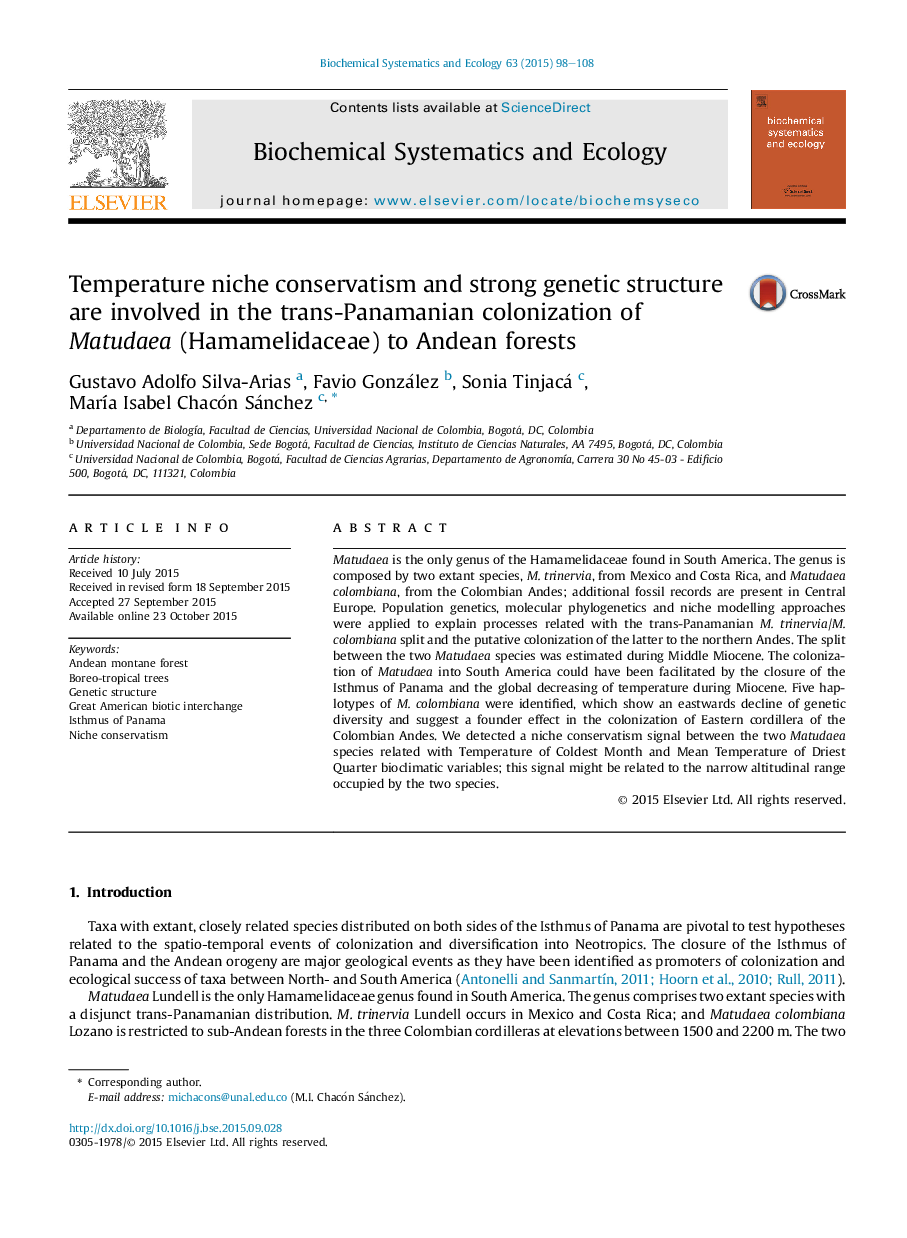| Article ID | Journal | Published Year | Pages | File Type |
|---|---|---|---|---|
| 1355187 | Biochemical Systematics and Ecology | 2015 | 11 Pages |
•The crossing of Matudaea across Isthmus of Panama occurred during Middle Miocene.•M. colombiana has a strong genetic structure related with the Andes subdivision.•A temperature niche conservatism signal was found between the two Matudaea species.
Matudaea is the only genus of the Hamamelidaceae found in South America. The genus is composed by two extant species, M. trinervia, from Mexico and Costa Rica, and Matudaea colombiana, from the Colombian Andes; additional fossil records are present in Central Europe. Population genetics, molecular phylogenetics and niche modelling approaches were applied to explain processes related with the trans-Panamanian M. trinervia/M. colombiana split and the putative colonization of the latter to the northern Andes. The split between the two Matudaea species was estimated during Middle Miocene. The colonization of Matudaea into South America could have been facilitated by the closure of the Isthmus of Panama and the global decreasing of temperature during Miocene. Five haplotypes of M. colombiana were identified, which show an eastwards decline of genetic diversity and suggest a founder effect in the colonization of Eastern cordillera of the Colombian Andes. We detected a niche conservatism signal between the two Matudaea species related with Temperature of Coldest Month and Mean Temperature of Driest Quarter bioclimatic variables; this signal might be related to the narrow altitudinal range occupied by the two species.
Graphical abstractFigure optionsDownload full-size imageDownload as PowerPoint slide
